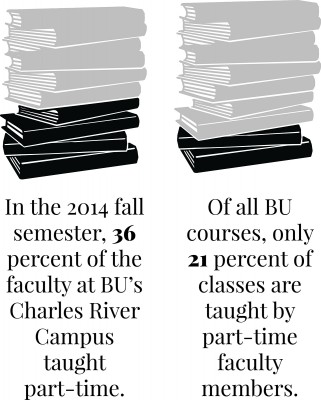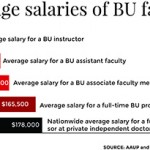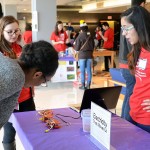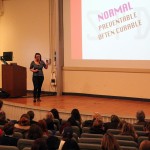
Postsecondary institutions are increasingly hiring more non-tenure, part-time faculty and fewer tenure and tenure-track faculty, according to a Friday study commissioned by the University of Southern California in partnership with the Association of American Colleges and Universities.
The study found that more than two-thirds of faculty in non-profit postsecondary education is now comprised of non-tenure and adjunct faculty, which may impact students’ learning environment and lead to faculty inequality. The study is part of a greater initiative called The Delphi Project on Changing Faculty and Student Success through USC.
“This trend has broken those responsibilities apart, with faculty members increasingly finding themselves focusing primarily on either teaching or research and having tenuous connections to the academic community on their own campuses and to other scholars in their disciplines more broadly,” the report stated.
Dan Hunter, an English lecturer in Boston University’s College of Arts and Sciences, said he sees this nationwide trend as a negative one.
“It [the trend] is a crisis in higher education, and we need to take a look at what it means to be a professor and outline what those responsibilities are,” he said.
In the fall 2014 semester, 36 percent of the faculty at BU’s Charles River Campus taught part-time, Lisa Celmer, the administrative coordinator for the Office of the Provost, wrote in an email. Part-time faculty taught 21 percent of the courses.
BU spokesman Colin Riley said the part-time professors serve as an asset for the school.
“The composition of BU’s faculty, particularly in the undergraduate courses, provide the university with great flexibility,” he said. “[BU is] still meeting the vast majority of student need through full-time faculty.”
In CAS, part-time faculty taught 9 percent of the undergraduate courses, while full-time faculty covered the remaining 91 percent of the courses, Celmer said. Overall, part-time faculty teach 40 percent of graduate students, but in the Graduate School of Arts and Sciences, fewer than 6 percent of the graduate student courses are taught by part-time faculty.
The recent vote for adjunct professors at BU to unionize, a decision made on Feb. 4, is one way to close the gap between part-time and full-time faculty members as more adjunct professors join the faculty, Hunter said.
The union, which passed by a 2-to-1 margin, will negotiate issues such as job security, payroll health benefits and office space for adjunct faculty members, The Daily Free Press reported on Feb. 5.
“One of the reasons why I worked with unionizing for BU is that we want to bring the emphasis back to the classroom, back to teaching,” Hunter said. “That is what you go to college for. You go to the university to be exposed to and to have good teaching.”
Several students said part-time faculty members offer just as high quality an educational environment as full-time and tenured faculty.
Tim Cheung, a first-year graduate student in the Sargent College of Health and Rehabilitation Sciences, said he has noticed a decrease in tenured positions for faculty members and the ways that affects the teaching styles of professors.
“Lots of people are swaying away from research and teaching … [with the] lack of tenure, we are losing a lot of good potential,” he said. “Some adjuncts are really working hard for the tenure, so they are pretty much A-game all the time while some know that is it just a part-time job, so they are only teaching to make an extra buck. You can tell the difference.”
Melissa Holihan, a freshman in CAS, said she can see why universities are hiring more part-time faculty.
“There is a benefit to having tenure professors, but having younger and more excited professors who connect well to students is also really important,” she said. “It is smart to find a balance between the two.”
Grace Jeffrey, a sophomore in CAS, said she did not know one of her writing professors was an adjunct professor until he mentioned it in class.
“I felt like our class was laid out differently than a lot of others,” she said. “[He] offered regular office hours, but during the semester, the professor was on a deadline for a book he was publishing, so our papers got turned back late.”
Jeffrey said although the situation may not be ideal, having a large number of adjunct professors can influence students’ education in a positive way.
“It is a double-edged sword,” she said. “Tenure professors can get lazy as time goes on. There is no competition for them because they have a spot, but at the same time, adjunct may not get paid as much, and there’s less job security. Adjuncts and part-time faculty might be more concerned with what they are teaching because it matters.”













